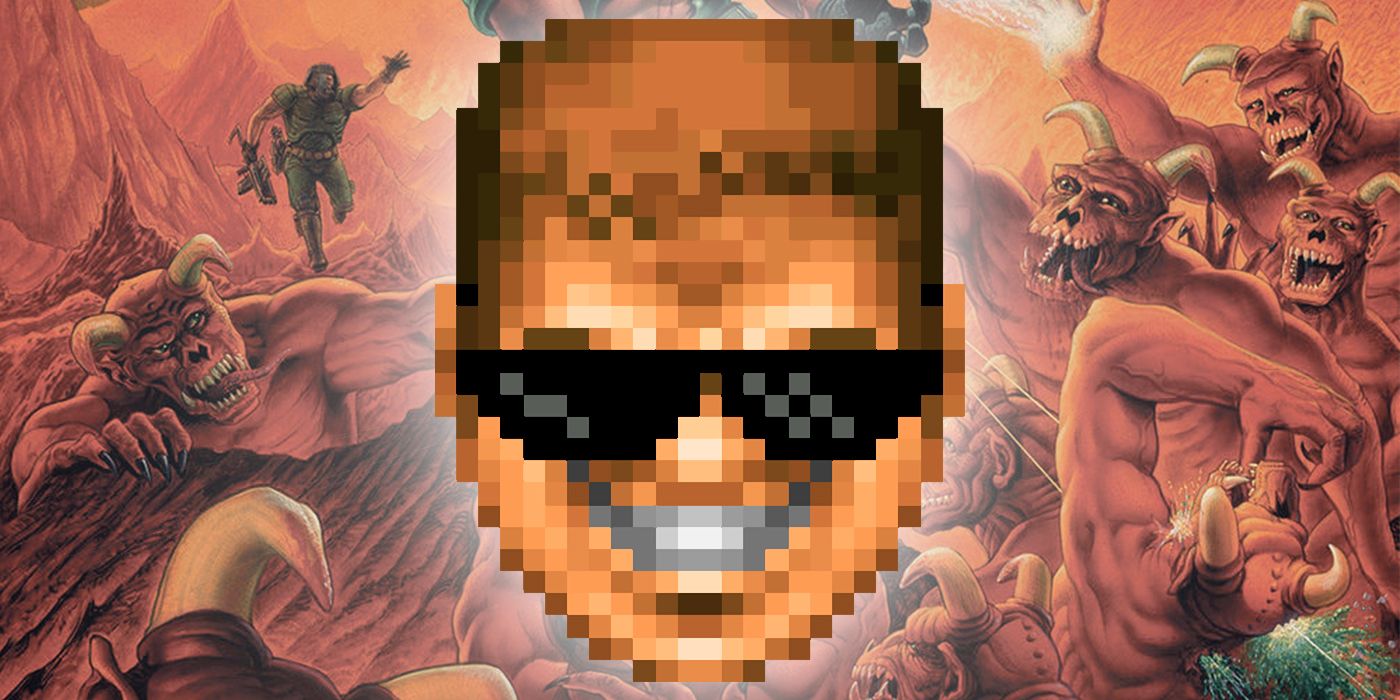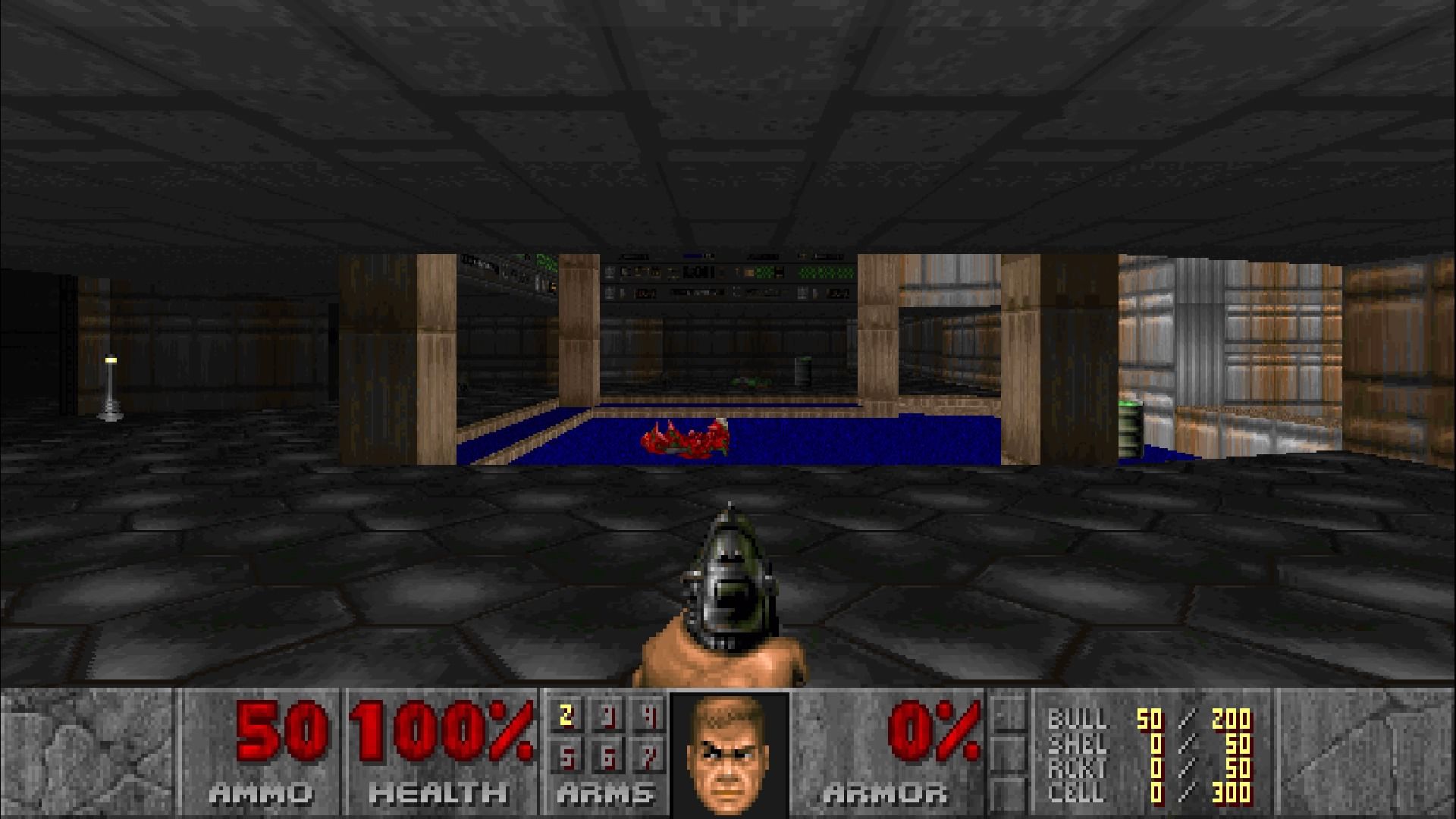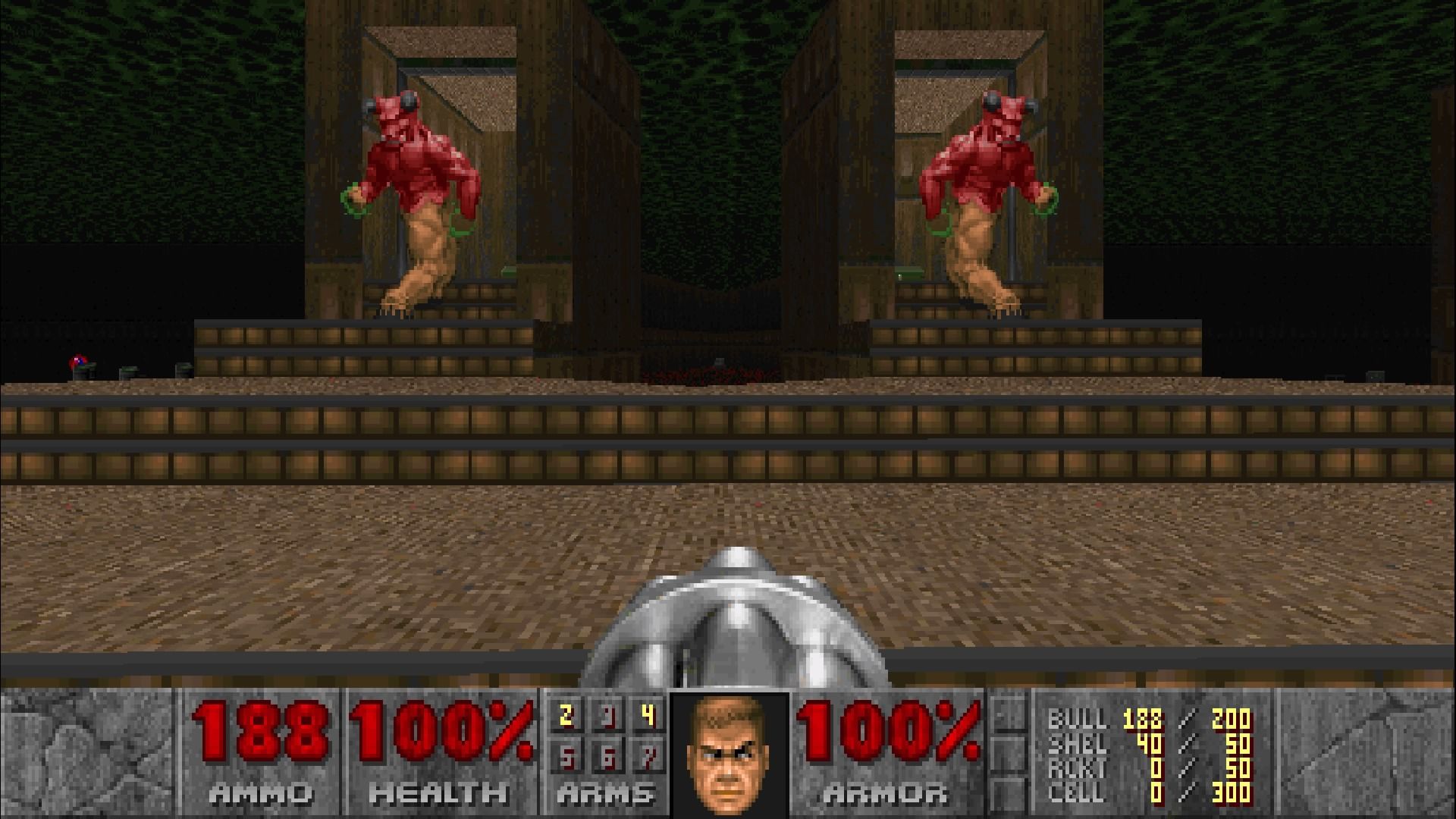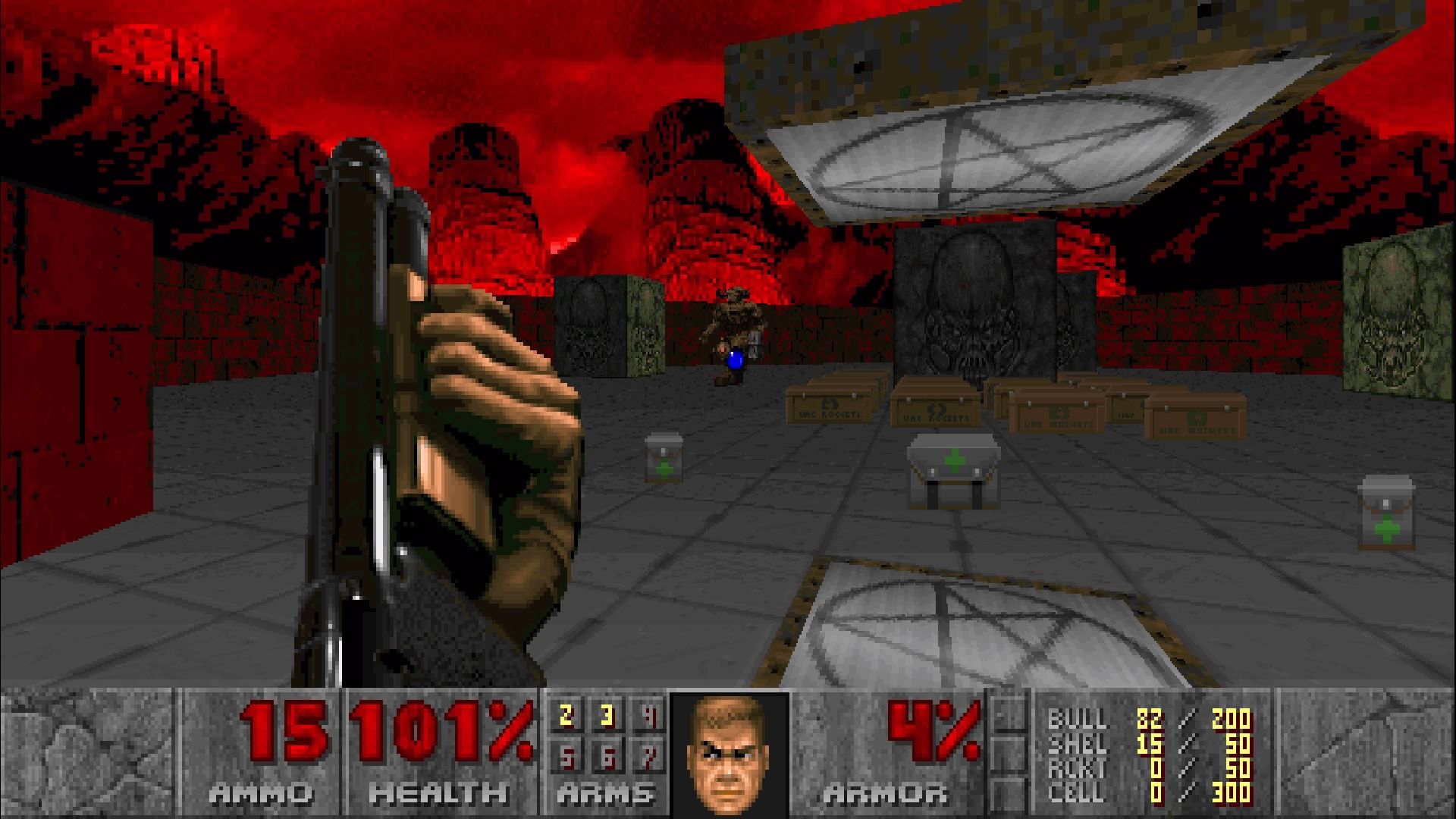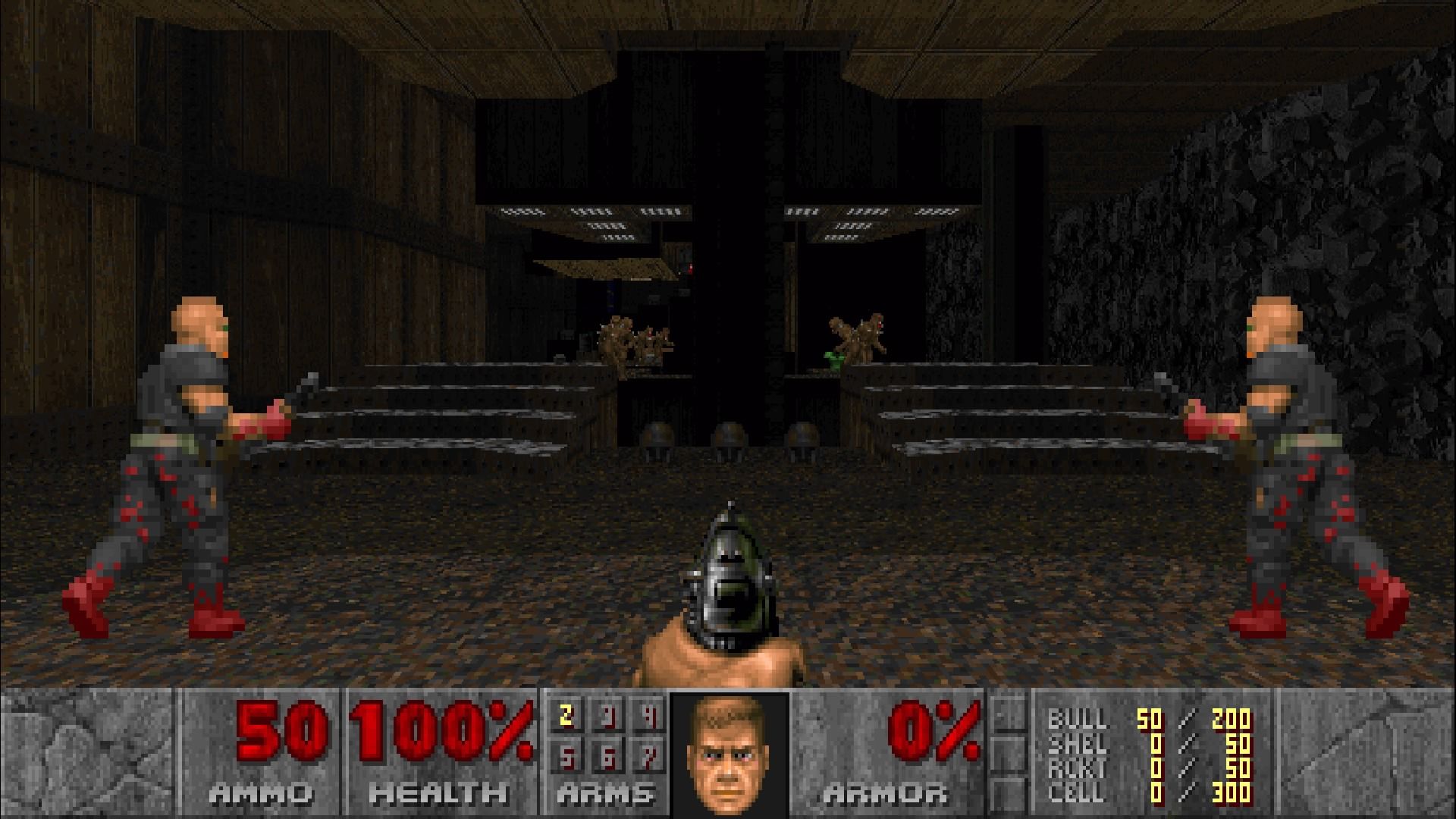1993's DOOM changed the gaming industry forever. To this day, the original title is continually played by millions due to its satisfying combat, intense demon encounters and, last but not least, its unrivaled level design. The maps of the original DOOM and its official fourth episode, The Ultimate DOOM's Thy Flesh Consumed, are revered among fans as some of the best in the FPS genre.
There are thirty-six maps across the games' four episodes, and very few among them can be considered bad levels. Narrowing down this huge collection of timeless stages to just five greats is no easy task, but here they are. These are the five best levels in The Ultimate DOOM.
E1M1: Hangar
No list of DOOM's greatest hits would be complete without Hangar. The very first level has become utterly iconic in a way that has transcended the rest of the game's already incredible fame. Hangar's dark and gloomy corridors can be cleared incredibly quickly by making a bee-line for the exit, but E1M1 houses some classic DOOM secrets, most notably the secret switch that allows the player to access the outside of the base.
The level is a great showcase for some of the title's strengths, and the revolutionary technology the game pioneered in the 90s. The map features windows that can be used to see outside, different levels of verticality, unusually shaped geometry and environmental hazards in the form of the acid room. While these things may seem quaint now, they rocked the gaming world in 1993. The level's music track, At Doom's Gate, has also become utterly iconic, referenced and revisited multiple times throughout the series.
E1M8: Phobos Anomaly
Phobos Anomaly is the first of the game's boss stages, culminating in a battle with two Barons of Hell affectionately referred to as the Bruiser Brothers by id Software. This stage is very simple, involving a walk through dark hallways killing Pinkies until reaching the boss room, but earns its place on this list due to its iconography and its atmosphere. The music track, Sign of Evil, creates a sense of crushing, impending doom as the player creeps towards the final encounter of the episode.
After defeating the Bruiser Brothers in the pentagram-shaped room, the walls lower to reveal what seems like a way out. Entering the teleporter sends the player into a pitch-black room filled with demons. id initially intended for this to cause Doomguy's death, sending him into Hell for the game's second episode. While Doomguy ultimately seems to survive, Phobos Anomaly is a dour affair ending in a no-win scenario.
E3M6: Mt. Erebus
Mt. Erebus is one of the most impressive levels in DOOM from a design perspective. At the time, this almost wholly open level was groundbreaking. It still remains a truly impressive stage that offers some of the best of DOOM today. The player begins on a large island situated in a sea of lava, with smaller structures and islands dotted around the ocean of red. Much of E3M6 is entirely optional and can be explored at the player's own pace, even hiding a secret exit to Warrens off the beaten path.
This rather sprawling map puts all of the player's skills to the test with various secrets, some tough encounters with swarms of demons and open level design. Mt. Erebus set the trend for the future open levels of DOOM II, and of the FPS genre as a whole.
E3M9: Warrens
The secret map of Inferno plays with the player's expectations in a wonderful manner. The stage begins by completely repeating the first level of the episode, Hell Keep. After reaching what was once the exit of the original stage, the walls lower to reveal a boss encounter with a colossal Cyberdemon. From here the player must backtrack through the level, which has now altered and opened up into something entirely different.
Warrens represents the playful nature of id Software. Its very nature as a secret level with a unique twist makes it one-of-a-kind. The stage proves more memorable than the one that inspired it, and players can expect to replay Hell Keep and predict the walls to fall away at any minute.
E4M2: Perfect Hatred
Perfect Hatred was designed by the legendary John Romero in just six hours. It is surprising that such a short amount of development time could lead to one of the series' most iconic (and difficult) maps. Perfect Hatred is nothing short of a gauntlet, filled with tricky platforming, copious amounts of enemies and even an encounter with a Cyberdemon before the stage exit. From the moment the map loads, enemies are alert and will begin attacking, and E4M2 rarely lets up from there.
The stage offers several memorable secrets, two of the most prominent being the hidden exit to E4M9: Fear, and the secret teleporter that can be accessed to telefrag the Cyberdemon and obtain a BFG-9000 without having to fire a single bullet. While some may argue that Perfect Hatred's level of challenge borders on excess, there is no denying how memorable and interesting the map truly is among retro shooters.

